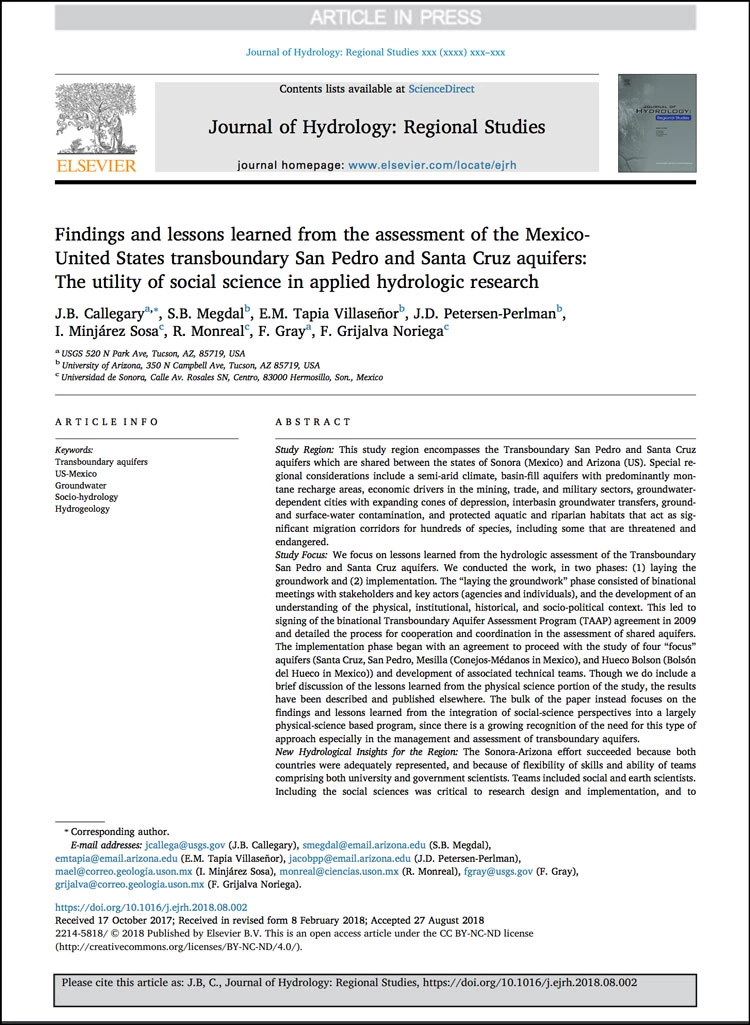The utility of social science in applied hydrologic research

Groundwater, the "invisible water," is difficult to assess, manage and govern for many reasons, mostly due to the unknown quantities of the resource. Political boundaries dividing groundwater aquifers make assessment even more challenging. This article focuses on lessons learned from the hydrologic assessment of the Transboundary San Pedro and Santa Cruz aqufiers. The authors conducted the work in two phases: (1) laying the groundwork and (2) implementation. The "laying the groundwork" phase consisted of binational meetings with stakeholders and key actors (agencies and individuals), and the development of an understanding of the physical, institutional, historical, and socio-political context. This led to the signing of the binational Transboundary Aquifer Assessment Program (TAAP) agreement in 2009 and detailed the process for cooperation and coordination in the assessment of shared aquifers. The implementation phase began with an agreement to proceed with the study of four "focus" aquifers (Santa Cruz, San Pedro, Mesilla (Conejos-Medanos in Mexico), and Hueco Bolson (Bolson del Hueco in Mexico) and development of associated technical teams. Though a brief discussion of the lessons learned from the physical science portion of the study is included, the results have been described and published elsewhere. The bulk of the paper instead focuses on the findings and lessons learned from the integration of social-science perspectives into a largely physical-science based program, since there is a growing recognition of the need for this type of approach especially in the management and assessment of transboundary aquifers.

